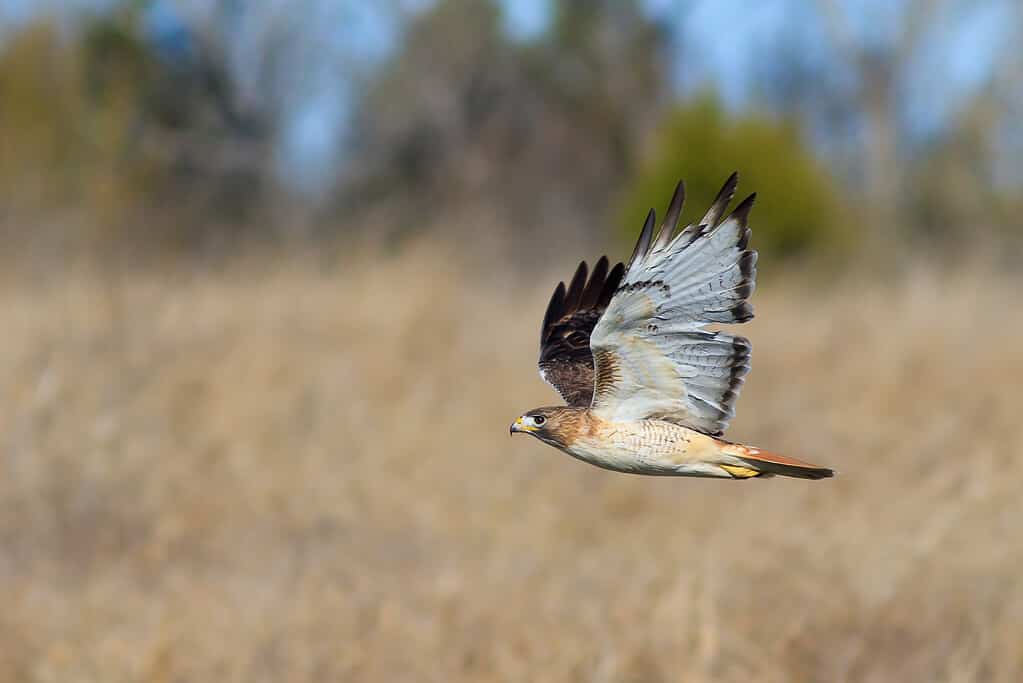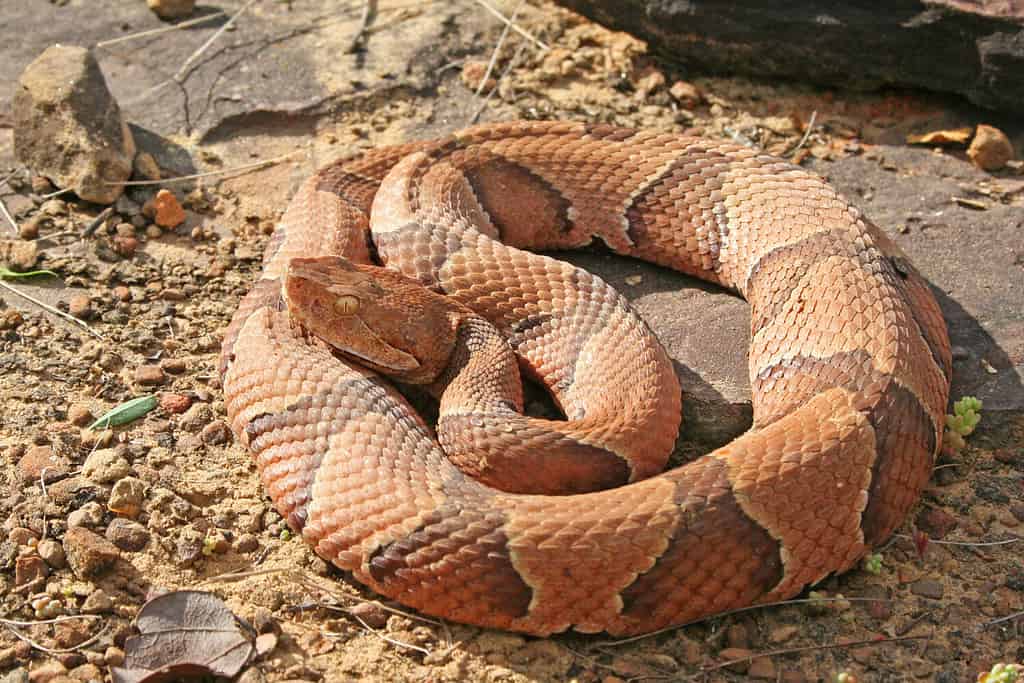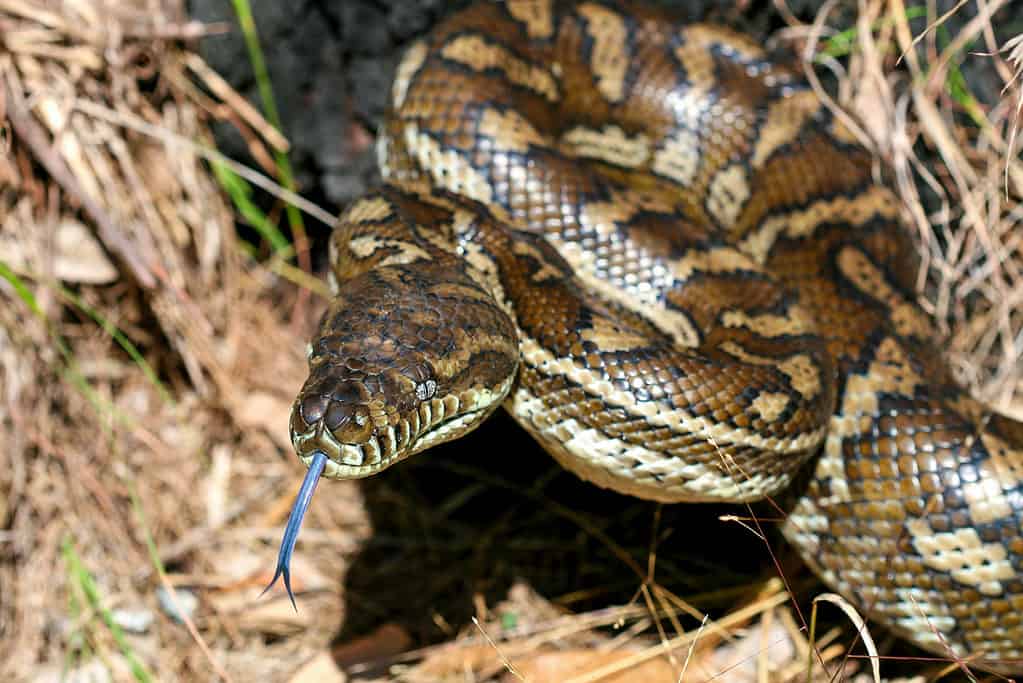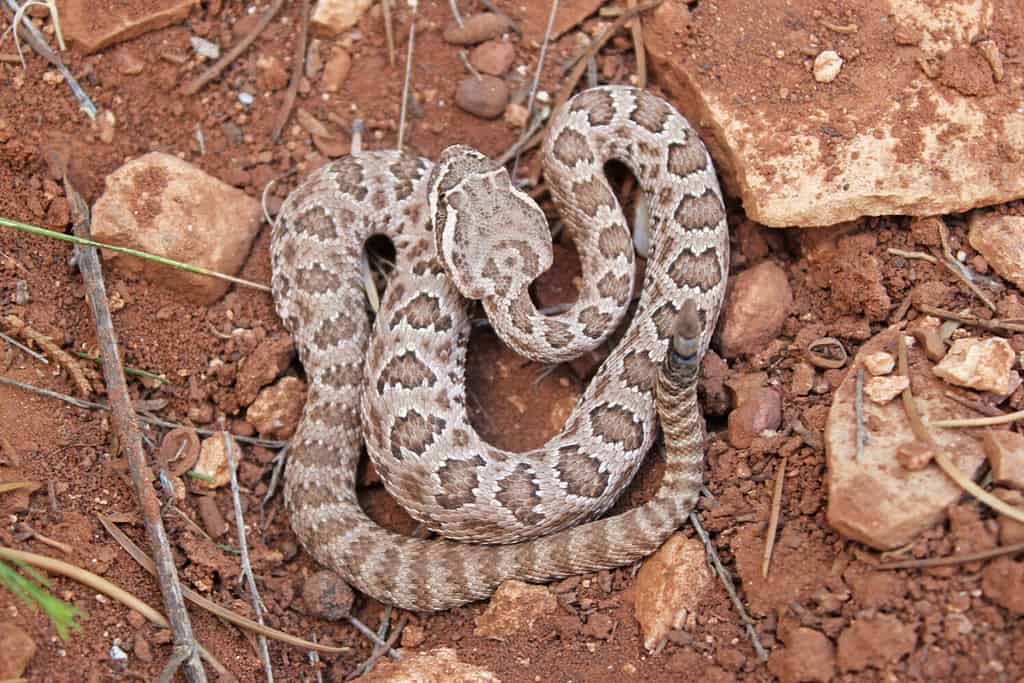Not all birds of prey compete for the same food source. For example, falcons and raptors primarily catch smaller animals like rats, rabbits, and squirrels. However, hawks and eagles prefer larger prey, but do hawks eat snakes? Yes, some hawk species do like to hunt and eat snakes. In fact, the red-tailed hawk is known for its snake-catching abilities. These predators are masters at catching all types of prey because of their speed and agility. So, they are spoiled for choice. Continue reading to find out which species of hawk eat snakes and how they catch them without getting bitten.
Hawks That Eat Snakes
While some species of hawk hunt and eat snakes, not all do. Typically, most hawk species feed on rabbits, rodents, lizards, squirrels, and chipmunks. It is risky for these birds of prey to hunt snakes because there is always a chance the snake can bite them. But, one species are experts at hunting snakes: the red-tailed hawk. In fact, these birds don’t shy away from venomous snakes. Another species that don’t mind venomous snakes is Cooper’s hawks.
Furthermore, the laughing falcon earned the nickname “snake hawk” as they almost exclusively feed on snakes. There are even hawks that feed on sea snakes, like the Indian fish eagle. This predator goes by many names, including sea hawks or Osprey hawks. However, their typical diet consists of aquatic animals like turtles and fish. Out of the estimated 200 hawk species in the world, approximately 30 to 50 species eat snakes, and only around 10 of them exclusively eat snakes.

It is risky for hawks to hunt snakes because there is always a chance the snake can bite them.
©iStock.com/cmcneill17
How Do Hawks Eat Snakes Without Getting Bitten?
Hawks have extremely sharp vision, up to five times better than humans. In addition, they have excellent binocular vision because of their forward-facing eyes. Therefore, they can clearly and accurately view their prey from mid-flight. As a result, they can look for prey from high vantage points while flying and swoop one up quickly and vigorously. They do this so fast that the prey hasn’t even realized what’s happening until it’s too late.
In order to attack and grab snakes, hawks have to attack fast and use their talons to grip the snake. Unfortunately, they only get one chance at this, so they must be precise. Therefore, the hawks’ primary hunting tool is its talons. If these birds didn’t have talons, they wouldn’t be able to catch anything. In addition, predatory birds use their talons for defense purposes.
Hawks can carry large prey because their sharp talons are connected to four muscular digits. If the initial attack doesn’t kill the snake, the pressure of the hawk’s talons will suffocate it to death. And, if the snake still doesn’t die, the hawk will peck it with its beak. Because their beaks are hooked and strong, they can kill the snake by biting it at the base of the neck. Furthermore, if the snake is venomous, hawks will directly attack the neck and break it off. Once the snake is dead, the hawk will either take it to a secluded place to eat or back to the nest for its young.
Hawk Species That Eat Snakes
So, now that you know hawks eat snakes, you are probably wondering what species of snakes these birds like to hunt. Here is a list of snakes that need to worry about these birds of prey:
1. Do Hawks Eat Copperheads?
Copperheads are venomous snakes that inhabit North America. They are generally gray or brown, with dark brown or black bands running down their bodies. These snakes typically feed on rodents but also eat other small animals like frogs and lizards. While hawks can successfully hunt copperheads, it is a rare occurrence because they don’t usually occur in the same area. Furthermore, copperheads are much smaller than the prey hawks generally feed on.

While hawks can successfully hunt copperheads, it is a rare occurrence because they don’t usually occur in the same area.
©Creeping Things/Shutterstock.com
2. Do Hawks Eat Cobras?
Hawks are usually not fussy about what they eat. However, there are certain animals they tend to avoid, which includes cobras. This is due to their size and venom, as cobras can reach lengths of six feet and have highly toxic venom. These aggressive serpents primarily feed on rodents and other small animals like lizards. As hawks are extremely intelligent, they are aware of the potential dangers cobras cause and avoid them. However, while these birds don’t typically eat cobras, there are circumstances where there is an exception to the rule. For example, if food sources are scarce. Additionally, juveniles with little or no experience might try hunting a cobra, but it will more than likely end up as a tragedy.

Cobras can reach lengths of six feet and have highly toxic venom.
©Roberto 33/Shutterstock.com
3. Do Hawks Eat Garter Snakes?
Garter snakes are common in North America. However, there is not much information on hawks eating these snakes. However, experts speculate whether these snakes are not big enough for hawks, as they prefer something more substantial. In addition, garter snakes are quick little things, making them hard to catch. Lastly, hawks might not like garter snakes because they don’t have a lot of meat on their bones and are not very nutritious.

Garter snakes are quick little things, making them hard to catch.
©iStock.com/rkhalil
4. Do Hawks Eat Pythons?
While a hawk can kill and eat a python, it’s not something that happens often. These are massive snakes that can grow to 26 feet long. Therefore, they are a bit too big for hawks, who typically hunt smaller animals. However, there are records of hawks killing and consuming pythons. For example, a hawk killed an 18-foot-long python in the Sunshine State, so there is proof that hawks eat pythons.

A hawk killed an 18-foot-long python in the Sunshine State.
©Michelle Marks/Shutterstock.com
5. Do Hawks Eat King Snakes?
While there are numerous snake species that form part of the hawks’ diet, there are many that don’t, including King snakes. This is due to several reasons; firstly, king snakes don’t occur in North or South America, while hawks occur all over the globe. Therefore, these two species don’t have many opportunities to cross paths. Furthermore, these snakes are relatively small, generally around three feet long. Lastly, king snakes are fast and agile, so it’s difficult for hawks to catch them.

While there are numerous snake species that form part of the hawks’ diet, there are many that don’t, including King snakes.
©Cherdchai Chaivimol/Shutterstock.com
6. Do Hawks Eat Rattlesnakes?
Unfortunately for rattlesnakes, when hawks are around, they are no longer at the top of the food chain. However, some hawk species have mastered the art of catching rattlesnakes. There are many sightings of hawks hunting rattlesnakes, including juveniles and adults. However, not all hawk species are equipped to hunt these snakes. But species like the red-tailed hawk or Harris’s hawk actively seek out these dangerous snakes and become a staple in their diets. Therefore, rattlesnakes must constantly look for hawks, which they don’t have to do with many other animals.

Some hawk species have mastered the art of catching rattlesnakes.
©Creeping Things/Shutterstock.com
Other Large Prey
While hawks’ primary prey is usually rodents, they also eat animals like:
- Frogs
- Groundhogs
- Insects
- Snakes
- Lizards
- Small birds
- Chipmunks
However, they can go for larger prey as well. For example, it is completely possible for a hawk to steal one of your pets if they weigh less than five pounds. So, if you have hawks in the area, keep an eye on your puppies and kittens when outside.
The photo featured at the top of this post is © J. S. Fisher/Shutterstock.com
Thank you for reading! Have some feedback for us? Contact the AZ Animals editorial team.






